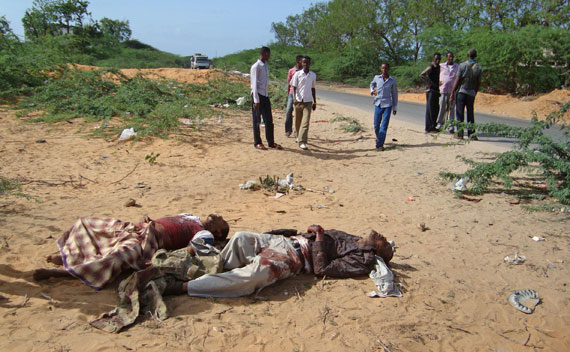Fazul Abdullah Mohammed’s Death: An Overdue Counterterror Victory in Somalia
More on:

Reportedly, Somalia’s Transitional Federal Government killed the most-wanted terrorist in Africa, Al Qaeda operative Fazul Abdullah Mohammed, in a random gun fight in Mogadishu on Tuesday. However implausible that story may be, his death is a victory for the victims of terror attacks by Al Qaeda in East Africa (as Secretary of State Hillary Clinton acknowledged while visiting Tanzania this weekend).
According to the UN, Mohammed was an associate of Osama Bin Laden, Al Qaeda, and the Taliban; “provided Al-Qaida paramilitary training and assistance to Somalis opposed to the United Nations intervention in Somalia”; “conspired with… others to commit, under the direction of Al Qa[e]da, the 7 August 1998 bombings of the Embassies of the United States of America in Kenya and Tanzania”; “transferred funds received from Bin Laden to Mombasa, Kenya, and facilitated Al Qa[e]da’s internal communications…and participated in the final preparations for the bombing of the United States Embassy in Nairobi”; “conspired to attack a civilian airliner in Mombasa and at the same time to bomb the Paradise Hotel in Kikambala, Kenya, killing twelve people and injuring forty”; “planned further bomb attacks in the area, including another attack against the United States Embassy in Nairobi”; and “conspired to commit terrorist acts during 4 July 2004 celebrations and the presidential elections in the United States”—among other crimes.
As would be expected for a terrorist of his notoriety—and one with a $5 million reward on his head—Mohammed was the target of repeated assassination attempts by the United States. The United States has tried to kill Mohammed, as well as his Al Qaeda associates in Somalia, no less than eight times since 2006:
- In 2006, the United States failed in secret negotiations with Somali clans to gain information about the whereabouts of Mohammed and two other highly sought Al Qaeda operatives, who were believed to be behind the 1998 U.S. embassy bombings in Africa and the 2002 attacks against an Israeli airliner and a hotel in Kenya.
- On Christmas Eve 2006, with U.S. support in the form of detailed intelligence and military training, Ethiopia invaded Somalia with the goal of unseating the ruling Islamic Courts Union (ICU). As the Ethiopian offensive overwhelmed the ICU defenses, Somali militants and Al Qaeda affiliates fled south and were tracked by the United States via Predator drones and cell phone intercepts.
- On January. 7, 2007, a U.S. Air Force special operations AC-130 gunship flying out of Ethiopia fired on a convoy of escaping Islamic militants near the village of Ras Kamboni in Somalia. Although perhaps ten Somali militants died in the attack, none were the targeted Al Qaeda operatives.
- On January 22, 2007, an AC-130 attacked Sheik Ahmed Madobe, an ICU senior leader, but failed to kill him. According to U.S. officials, Madobe was later captured by Ethiopia.
- On June 1, 2007, fishing boats containing armed Al Qaeda affiliates—including Fazul Abdullah Mohammed—landed at the northern Somali fishing port of Bargal and found themselves engaged in a gun battle with local police. After the regional government appealed to U.S. forces in Djibouti for help, on June 1, 2007, a Navy destroyer in the Red Sea fired several cruise missiles against the suspected Al Qaeda affiliates. The following day, U.S. special operations forces found the remains of eight militants, but Fazul Abdullah Mohammed survived and remained at large.
- On March 3, 2008, a U.S. submarine fired cruise missiles at a house in the Somali town of Dobley. The target was Saleh Ali Saleh Nabhan, wanted by the FBI for his involvement in the 2002 attacks against the Israeli airliner and the hotel in Mombasa. Several suspected militants and civilians were killed or wounded, but not Nabhan.
- On May 1, 2008, after being tracked by communications intercepts and satellite imagery for weeks by U.S. intelligence, Aden Hashi Ayro—an operative in Al Qaeda’s East Africa network—and several aides were killed in a volley of cruise missiles fired from a U.S. naval vessel into a compound in the central Somali town of Dusa Marreb.
- On September 15, 2009, helicopter-borne U.S. special forces conducted a raid that killed Saleh Ali Nabhan, a top Al Qaeda commander. Military helicopters strafed a car carrying Nabhan, killing him and four other militants.
More on:
 Online Store
Online Store